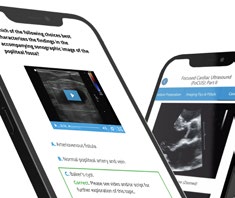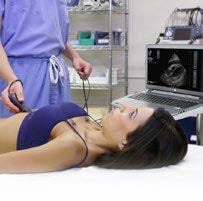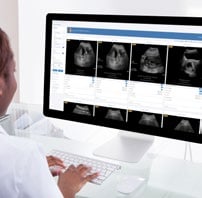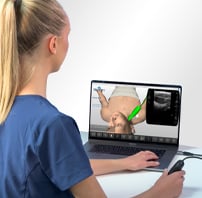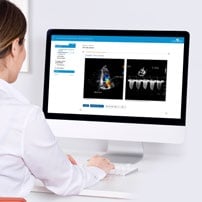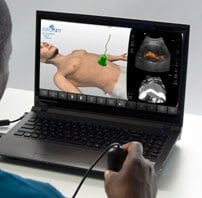Ultrasound of the Abdomen
Immersive Abdominal Ultrasound Training
Comprehensive Abdominal Ultrasound Training Courses & Scanning Practice
SonoSim's abdominal ultrasound training content was created to elevate the skills and knowledge of learners in abdomen ultrasound. Leading ultrasound experts author our ultrasound abdomen curriculum, which is peer-reviewed, and CME accredited. Each topic includes a course, scanning cases, knowledge checks, scanning assignments, and a Mastery Exam. Learners collect certificates, create abdominal ultrasound image portfolios, and can claim CME* if desired.
Our abdominal ultrasound training topics are mapped to various consensus-based association guidelines and requirements, including ARDMS Abdomen Sonography exam requirements.

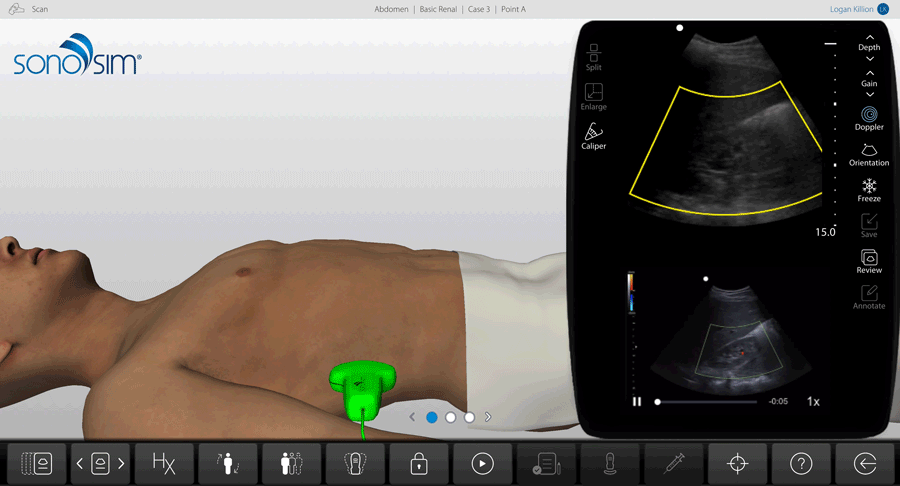
SonoSim supports learners in the development of abdominal ultrasound knowledge & skills needed to provide exceptional patient care.
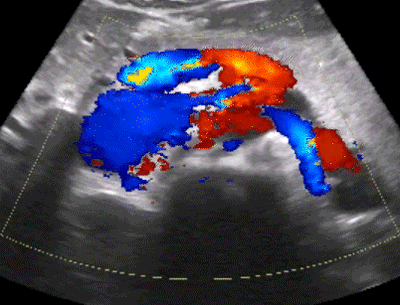
The standardized structure for each topic delivers against the key learning objectives for achieving abdominal ultrasound competency, including:
- Abdominal Ultrasound Exam Indications
- Regional Anatomy & Physiology
- Abdominal Anatomy
- Ultrasound Scanning Techniques for the Abdomen
- Abdominal Ultrasound Tips & Pitfalls
- Pathologic Abdominal Case Studies
|
POCUS & DMS Protocol Scanning Assignments Customized scanning assignments are provided based upon whether learners are pursuing diagnostic medical sonography (DMS) or point-of-care ultrasound (POCUS) training. DMS Protocol Scanning Assignments are available for many topics/protocols. |
Extensive Abdomen Ultrasound Training
Add or Expand Expertise with our Abdominal Ultrasound Training
Our immersive learning environment supports & accelerates each learner's journey to successfully performing abdominal ultrasound across a variety of applications. Learners can acquire the clinical acumen and technical expertise to confidently interpret abdomen ultrasound images, identify abnormalities, and make informed patient care decisions.
Ultrasound is an operator-dependent technology, and individual learners have varied learning styles. As such, SonoSim learners are immersed in multimedia ultrasound training that includes: audio, video, text, illustrations, and abdominal ultrasound case studies, the combination of which takes learning to a whole new level.
With the SonoSimulator, learners have unparalleled opportunities to engage with scanning cases from real patients via the SonoSimulator probe. Virtual scanning of real patient imagery allows them to develop image acquisition & interpretation skills on real pathologic cases.

Abdomen Ultrasound Training For Every Program & Learner
If you want to learn or teach ultrasound, SonoSim has a plan for you.

Schools &
Educational Groups
Interactive, Hands-On, Virtual Learning • Textbook Pricing
Unlimited Access Licenses
DMS/UME/GME Discount
less than $50/mo/learner†
- All Ultrasound Topics
- SonoSimulator Software
- All Normal & Pathologic Cases
- Tracking & Image Portfolios
- QuestionBank & SPI Test Prep
- Integration Support
++ CME* add-on available
++SonoSim LiveScan add-on available
†List price per non-transferrable seat license, based on 3-year term, 5 learner minimum. Alternate contract terms available on request. Billed annually. Licenses transferrable between learners each year. Additional start-up costs include onboarding and a SonoSimulator probe hardware purchase of $249 each.
Hospitals &
Medical Groups
Self-Paced, Remote Ultrasound Learning • Save on CME & Travel
Unlimited Access for Practicing Physicians, Nurses, PAs, NPs, EMTs...
as low as $799/learner†
- All Ultrasound Topics
- SonoSimulator Software
- All Normal & Pathologic Cases
- Tracking & Image Portfolios
- QuestionBank & SPI Test Prep
- Integration Support
++ CME* available add-on available
++ SonoSim LiveScan add-on available
†List price per non-transferrable seat license, based on 3-year term, 5 learner minimum. Alternate contract terms available on request. Billed annually. Licenses transferrable between learners each year. Additional start-up costs include onboarding and a SonoSimulator probe hardware purchase of $249 each.
Students &
Recent Graduates
Lead Your Peers
Self-Paced Ultrasound Learning
Annual Memberships
for Aspiring Providers
$599/year†
- All Ultrasound Topics
- SonoSimulator Software
- All Normal & Pathologic Cases
- Certificates & Image Portfolios
- QuestionBank & SPI Test Prep
†Not eligible for CME. Proof of academic status required. Renewable annually as long as eligibility applies. Upgradeable to Provider license 1+ year post-graduation.
Individual Medical Providers
Build the Ultrasound Skills You Need • Get CME
Flexible Packages • CME included
Choose from 85+ Topics
Each Topic from $399 & up†
- Choose Your Ultrasound Topics
- SonoSimulator Software
- Relevant Scanning Cases
- Image Portfolio
- Up to 6 CME credits per topic*
† CME included. All your topics renewable annually for $249. Exclusive member discounts & benefits apply throughout the year.
How It Works
A Comprehensive Ultrasound Learning & Teaching Ecosystem
The SonoSim Wave
An Ultrasound Insights Newsletter
Get the latest trends in ultrasound training, education, & applications delivered to your inbox.





































